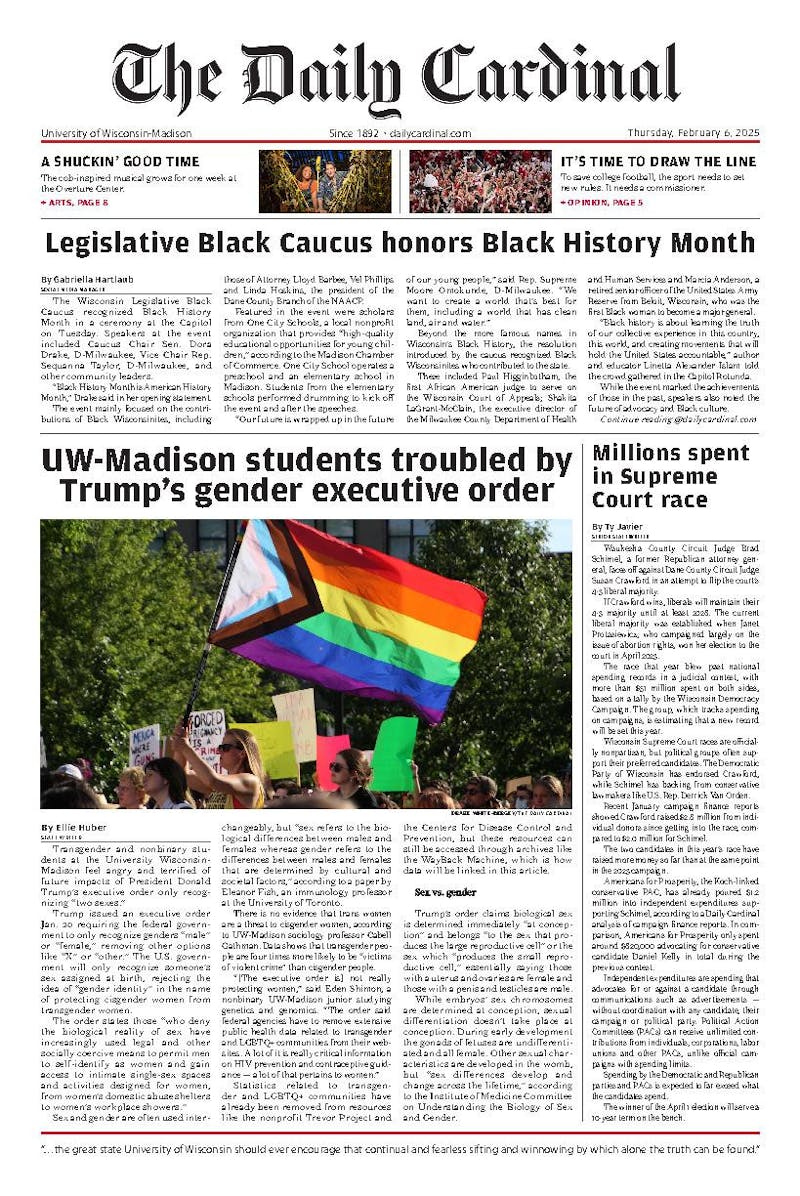A federal judge temporarily blocked a National Institutes of Health (NIH) decision stripping billions of dollars from universities, including $65 million from the University of Wisconsin-Madison hours after it took effect.
The lawsuit, which blocks the move in the 22 states including Wisconsin that filed, sued President Donald Trump’s administration for making an “arbitrary and capricious” change to agreed-on funding, warning the decision would devastate research and grind “cutting edge work” to a halt.
At the center of the conflict are indirect costs, also known as Facilities and Administrative (F&A) costs, which fund everything from shared scientific equipment to lab and facility maintenance and construction.
NIH announced Friday it would cap indirect cost rates to 15% for all new and current grants — a sharp reduction from the current average rate between 27% and 28%. Many major research institutions, including UW-Madison, whose rate ranges from 26% to 55.5%, have a higher percentage, and the university said the cap would “significantly disrupt” its ongoing and future research.
“[The] proposed cut in F&A costs would be disastrous for science and universities,” Wisconsin Institute for Discovery Director Jo Handelsman told The Daily Cardinal. “One thing that the people at [The Department of Government Efficiency] who dictated this change don’t seem to understand is that F&A are REAL RESEARCH COSTS [sic].”
Since re-assuming office three weeks ago, Trump has slashed budgets and laid off employees, criticizing perceived “wasteful spending.” NIH said their decision was intended to ensure “as many funds as possible go towards direct scientific research costs rather than administrative overhead,” though researchers pushed back, highlighting the necessity of these expenses to their work.
“The entire scientific research enterprise is dependent on indirect costs,” Madeline Topf, a microbiology Ph.D student and co-president of the UW-Madison Teaching Assistant Association (TAA), told the Cardinal. “[It funds] the essential environment to do cutting-edge research safely — facilities with proper ventilation and autoclaves to sterilize beakers and tools, support staff salaries who make sure we properly dispose of harmful waste and fix broken equipment — [these costs] keep the lights on at UW-Madison.”
In a statement Monday morning, UW-Madison leaders underlined these indirect costs aren’t optional but instead an “absolutely fundamental part of innovative science.”
NIH funding is UW-Madison’s largest source of federal support, and a reduction in UW-Madison’s indirect cost rate would eliminate $65 million in funding for 2025, with a comparable amount for each following year, according to the lawsuit.
UW-Madison Chancellor Jennifer Mnookin told the Board of Regents Friday the university spends $18.8 million in federal research expenditures weekly. UW-Madison is the United States’ sixth largest spender on research — spending $1.7 billion in 2023 — and funds a vast umbrella of projects and research, which Mnookin underlined is central to the university's purpose of “innovating for the public good.”
In the release, UW-Madison touted past innovations funded by NIH grants and pointed to current work being done, such as cell therapies to treat cancer and heart attacks and a NIH-funded project seeking to develop treatments and a cure for Alzheimers.
The loss of NIH funds would “immediately impact” the university’s ability to conduct this research, UW-Madison said, adding the NIH cap would imperil its ability to train the next generation of scientists and healthcare professionals and could delay or prevent the discovery of life saving treatments and cures.
“NIH’s proposed change would pose tremendous harm to our educational institutions and, even more critically, to the public who benefit from our research” UW-Madison said, noting they provided information to the lawsuit.
NIH Funding is irreplaceable, leaders say
The lawsuit notes indirect cost rates — which vary between universities — are carefully negotiated with the federal government based on each institution's unique needs, and the NIH lacks the authority to unilaterally deviate from negotiated rates.
In several appropriations bills, including one from 2024, Congress specifically prohibited NIH from changing how indirect costs are determined. Trump had previously attempted to reduce the indirect cost rate for research institutions to a categorical 10% in 2017.
Handelsman said the cap is “illegal,” though she said Congress could change the rules on indirect cost rates in the next budget.
Indirect costs are currently not taken out of grants, which is forbidden by federal law. These costs — building maintenance, security, electricity — are typically paid for with the indirect cost rate, which is in addition to the grants.
“Universities don’t have the resources to pay these costs, so they will have to start refusing federal funding for research if the 15% cap on F&A goes into effect,” Handelsman said. She said no other source exists to fill in the costs.
UW-Madison did not respond to a request for comment on how they planned to respond if the cap is implemented.
The lawsuit asks the 22 states to file a status report on Tuesday and again every two weeks to confirm regular disbursement of the funds. A hearing is scheduled for Feb. 21.
Gavin Escott is the campus news editor for the Daily Cardinal. He has covered protests, breaking news and written in-depth on Wisconsin politics and higher education. He is the former producer of the Cardinal Call podcast. Follow him on X at @gav_escott.






